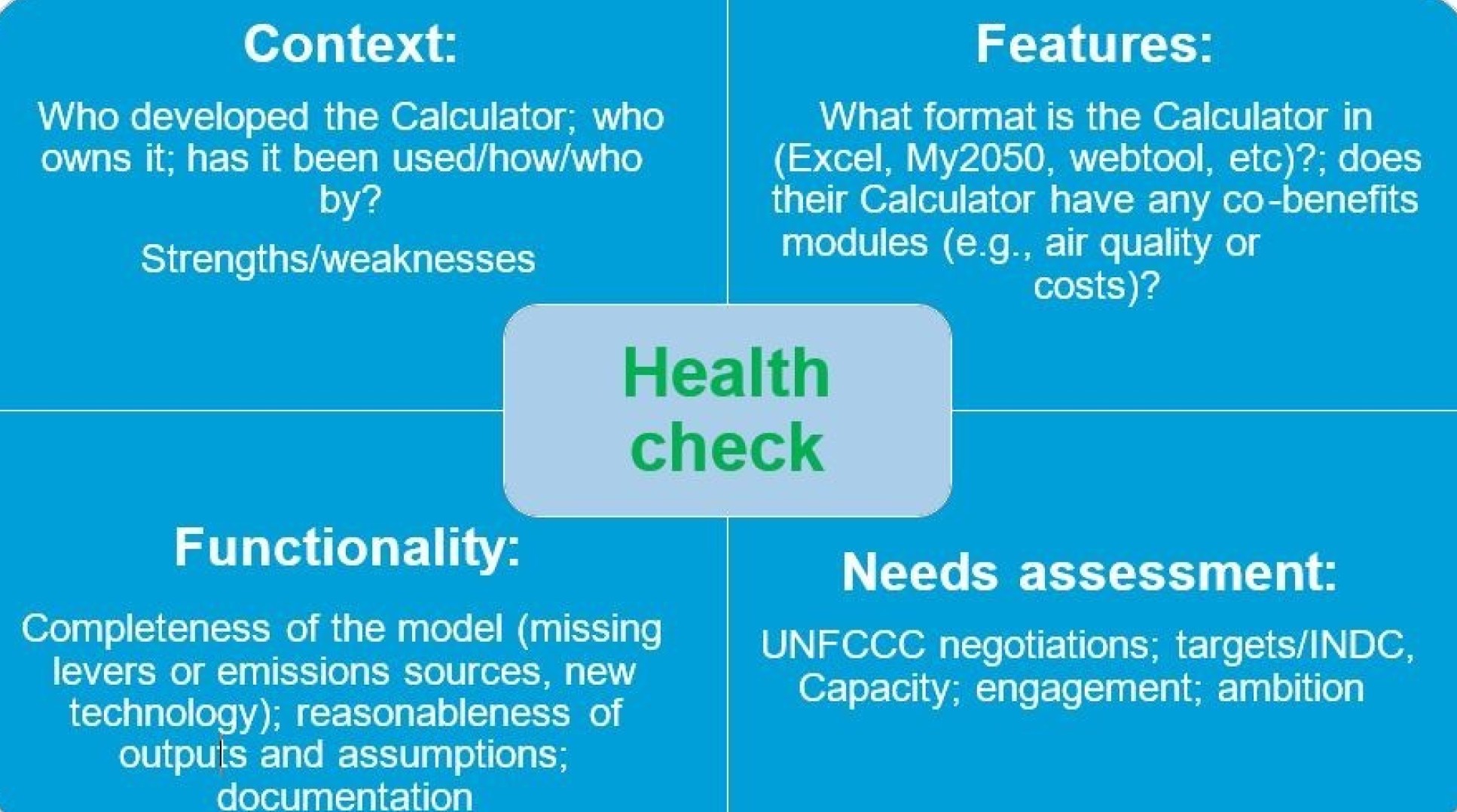

Let’s start by reminding ourselves about what a “healthy” 2050 Calculator will help countries to do. It will:
- ü Create 'ah-ha' moments – provide insight so countries can take action
- ü Start great debates – challenge fear and inertia
- ü Thrive in government – attract political champions to maintain momentum
- ü Help take decisions – to limit the impacts of dangerous climate change.
Why should we bother with a health check on existing 2050 Calculators?
The simple answer is because it allows us to refresh existing Calculators, and to refine our approach to develop new ones. We need to understand how users interact with the Calculators – what they like, and what they find difficult.
The 2050 Calculator must ‘never stay still’ – if it does, it will not benefit from improvements in the science of greenhouse gas (GHG) mitigation and inventories. ‘Staying still’ results in going backwards. Software advances as well – ease of use, functionality and security all need to be up-to-date.
Which countries have we looked at so far?
Our team has conducted health checks on two existing Calculators – Colombia and Nigeria. Firstly, we created a simple user questionnaire which allowed us to gather feedback on the Calculator in action. Secondly, we looked at the specific Calculators that the countries were using. We looked at a number of areas including completeness, documentation and reasonableness of output. We also ran an Excel ‘QA Workbench’ programme on the Calculators to identify any problems in the model.
The diagram below summarises the four core areas we examined – context, features, functionality and needs assessment:

What are our findings to date?
Feedback suggests that Calculators have proved to be a useful tool for the countries who have adopted them. They have helped explore future energy and GHG emissions pathways; however, Calculators need regular maintenance to ensure that GHG mitigation assumptions are still valid, and inventory baselines are still current. For Calculators to have enduring relevance, it is not appropriate to ‘develop and forget’. At times, a lack of Calculator awareness within government has limited its application. Also, it is one of several carbon management tools available to governments – the benefits of Calculator application need to be made clear to stakeholders.
We found very little evidence of quality checking – however, it is likely that quality assurance has been conducted during the development of the Calculators but not documented. It is really important for countries to document quality processes to help build trust.
A serious problem is the loss of institutional memory caused by colleagues who have developed and used the Calculator and then moved onto new roles. This is a common problem with Calculator teams as well as more general government climate change related roles. We recommend documenting the history of the development of the Calculator – even if only orally through a sound recording – to prevent knowledge from being irretrievably lost.
Calculator maintenance does not need to take a lot of time; however, if it is left undone for many months or a couple of years, it becomes a real mountain to climb, and we could all do without that.
Article text (excluding photos or graphics) © Imperial College London.
Photos and graphics subject to third party copyright used with permission or © Imperial College London.
Reporter
Victoria Hoare
Centre for Environmental Policy

Contact details
Email: v.hoare@imperial.ac.uk
Show all stories by this author



